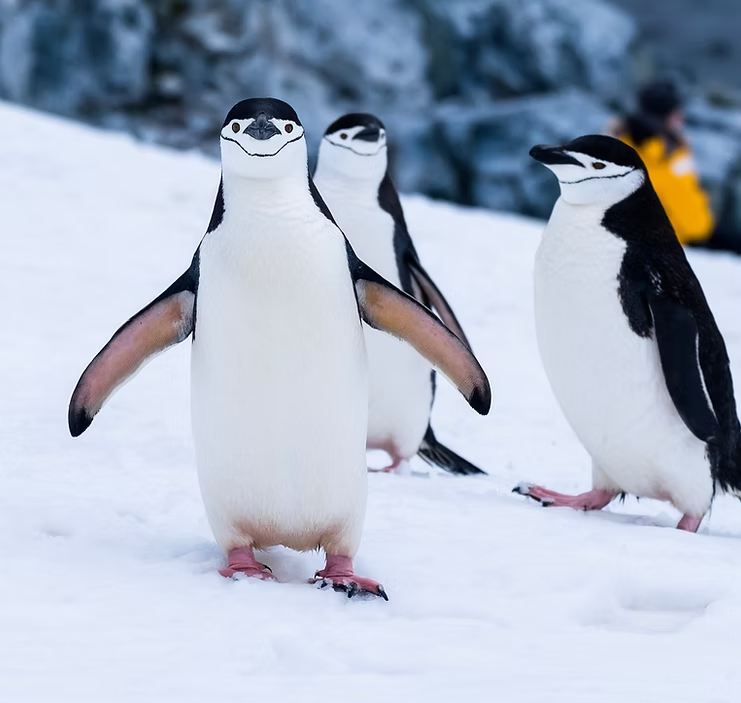
Shetland Island
Explore Shetland Island
Shetland Island
South Shetland Islands: Antarctica’s Gateway to Ice and Wildlife
The South Shetland Islands are a breathtaking archipelago just north of the Antarctic Peninsula, offering dramatic landscapes, towering glaciers, active volcanoes, and abundant wildlife. These islands serve as a primary landing point for Antarctic expeditions, providing visitors with their first steps on the frozen continent. Whether you're exploring penguin colonies, hiking volcanic terrain, or visiting historic research stations, the South Shetlands are a must-visit destination for polar explorers.
Frequently Asked Questions: South Shetland Islands
The Antarctic summer (November to March) is the only season when travel to the South Shetland Islands is possible:
- November to December: Pristine ice landscapes, penguin courtship and nest-building season.
- January to February: Peak hatching season, active whales and seals, and warmer conditions.
- March: Whale-watching at its best, with spectacular sunsets and fewer tourists.
- Deception Island – A unique volcanic caldera where you can hike inside an active volcano and take a polar plunge in geothermally heated waters.
- Half Moon Island – Known for its Gentoo Penguin colony and scenic, glacier-covered mountains.
- Livingston Island – Home to massive elephant seals, penguins, and scientific research bases.
- King George Island – The largest island, featuring multiple research stations, a landing airstrip, and stunning ice formations.
- Penguin Island – A small volcanic island with large Chinstrap Penguin colonies.
- Hannah Point – A wildlife hotspot with elephant seals, Gentoo and Chinstrap Penguins, and Antarctic seabirds.
- Aitcho Islands – One of the first landing sites on many Antarctic cruises, offering close encounters with seals and penguins.
There are no native foods in the South Shetland Islands, but meals are provided onboard expedition cruises or at research stations:
- Warm soups and stews – Essential for keeping warm in Antarctica.
- Fresh seafood – Available on cruise ships, including Antarctic-caught fish.
- Hot drinks (coffee, tea, mulled wine, or hot chocolate) – Common after excursions.
- International fine dining – Offered on luxury cruises with fresh ingredients flown in.
- Expedition Cruises: The primary way to visit, with ships departing from Ushuaia, Argentina, or Punta Arenas, Chile.
- Fly-Cruise Options: Fly to King George Island, avoiding the Drake Passage crossing before boarding an Antarctic cruise.
- Zodiac Boats: Used for shore landings to explore penguin colonies and research bases.
- Kayaking: Available on some expeditions for a more intimate experience with icebergs and wildlife.
- No visa is required for the South Shetland Islands, but travelers must comply with departure country regulations (Argentina or Chile).
- Permits are required for certain research station visits, typically arranged through cruise operators.
- Your passport must be valid for at least six months beyond your travel date.
- Travel insurance is mandatory, covering emergency evacuation and medical expenses.
- Antarctica has no official currency—most transactions occur onboard your cruise.
- S. Dollars (USD), Euros (EUR), and British Pounds (GBP) are accepted at some research stations, such as Port Lockroy.
- No ATMs or banks exist—bring any necessary cash before departure.
- English is the primary language spoken on Antarctic cruises and research stations.
- Spanish, Russian, and Chinese are also spoken at various national research bases.
- No native human population—only scientists, expedition crews, and visitors.
- Follow strict environmental rules—no littering, no touching wildlife, and leave nothing behind.
- Keep a safe distance from wildlife—at least 5 meters (15 feet) from penguins and seals.
- Photography is allowed, but avoid using flash near animals.
- Respect research stations—some allow visits, but always follow instructions from station personnel.
- Stay on designated paths to minimize impact on fragile ecosystems.
- Tipping is common on Antarctic cruises but not required.
- Guides & Expedition Crew: $10–$20 per person per day.
- Housekeeping & Ship Staff: $5–$10 per person per day.
- Tipping can usually be done at the end of the cruise in cash or via onboard accounts.
- For peak season (December–February): Book 12–18 months in advance for the best cabins and pricing.
- For last-minute deals: Some operators offer discounts, but spots fill quickly.
- For fly-cruise options: Book at least 12 months in advance, as these trips are limited.
- COVID-19 restrictions have been lifted, but always check with your tour operator for health protocols.
- Strict environmental regulations apply—visitors must adhere to the Antarctic Treaty and IAATO guidelines.
- Extreme weather may impact itineraries—flexibility is key when traveling to Antarctica.
- No medical facilities on the islands—serious medical issues require evacuation.
Contact us at 281-229-0862 or admin@pointmetoparadise.com
